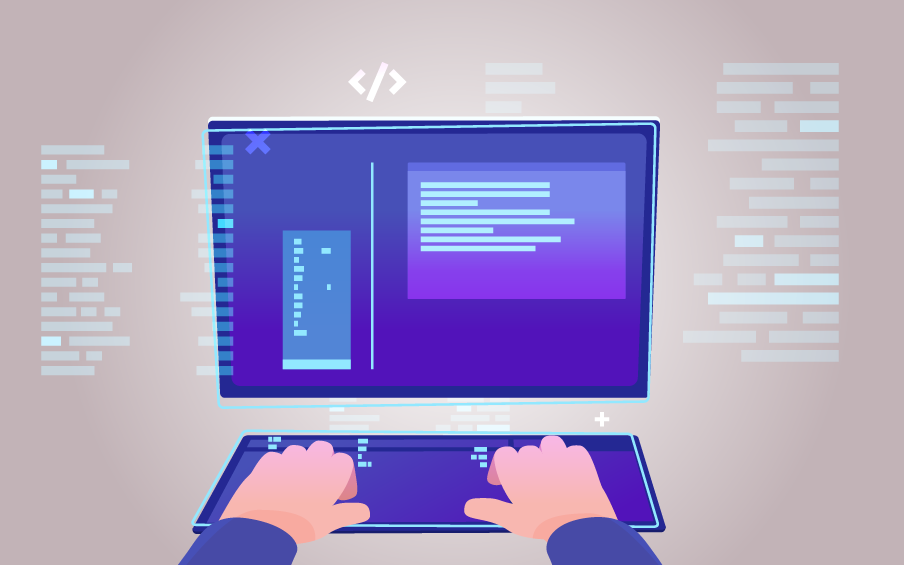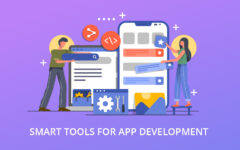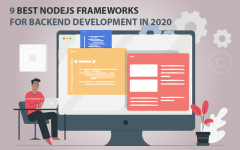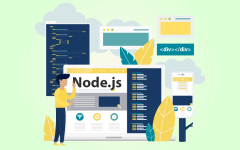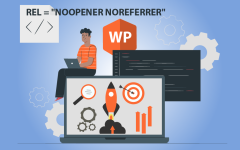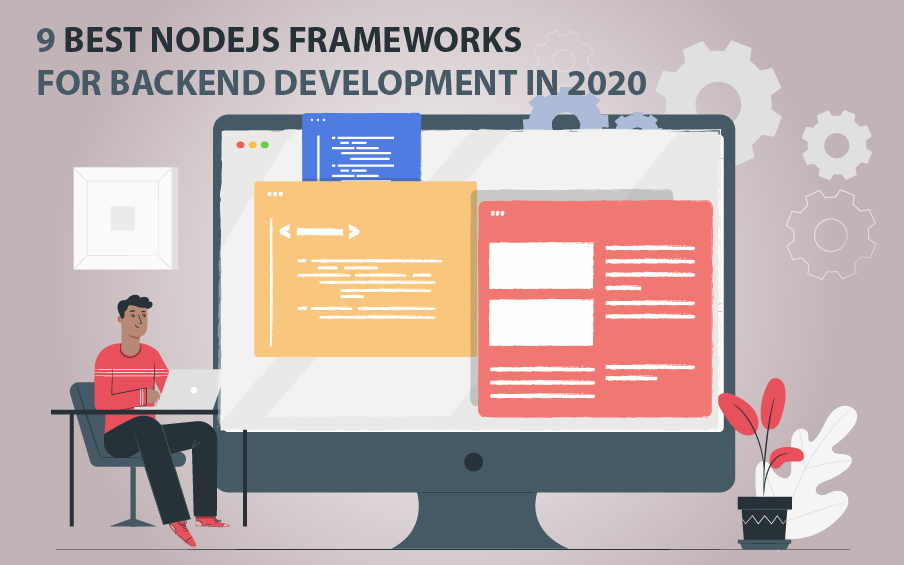
NodeJS Frameworks for Backend Development
Node.js is a progressive backend development technology that was first released in 2009. It continues to grow in popularity among software developers for creating both the frontend and backend of apps, using a single programming language, JavaScript. Its straightforwardness and ease of use make it a good choice for beginners who want to launch full-fledged apps without having to learn multiple complex technologies. It saves time for programmers, who can create code that other engineers will easily understand.
Node.js is not a one-size-first-all solution, but it has become a leader for assembling client-focused applications that process large volumes of data. A non-blocking I/O model allows multiple requests to be processed simultaneously, increasing response speed.
Is Node.js a framework?
Node.js is a runtime environment, not a framework. It is a virtual machine on top of a physical machine where your app can execute commands, process code and deliver results. A framework is a set of specific programming rules and best practices designed to speed up and improve coding efficiency. Frameworks provide predictable outcomes, automate some manual operations and fill in knowledge gaps.
A runtime environment is a platform for running your code, while a framework prescribes how to run it. A runtime environment provides a foundation, while a framework provides a toolkit for building on it.
Once you learn the key principles of coding on Node.js, you can start to assemble a customized technology stack that aligns with your needs. The first step is to choose the most suitable framework. This article provides a list of nine popular options. We will briefly consider the most important features of each.
Express.js
Key characteristics:
- Speed
- Flexibility
- Minimalist interface
- Versatile built-in functionality for a wide range of projects
- MVC pattern
- Middleware can be set up to handle HTTP queries
- Fast I/O and routing
- The ability to use different template engines
Derby.js
- Bi-directional development for both frontend and backend components
- Multiple customization features for implementing unique projects
- MVC pattern found it many alternative solutions that is familiar to experienced developers
- Full-stack technology that can be used to create bothweb< and mobile software
- Real-time concurrency, efficient computing power and throughput performance
- Easy syncing of all the apps functional components
- Automatic resolution of online/offline conflicts
Hapi.js
- Open-source
- Meets requirements for both web app and server-side coding
- Reliable
- Rich toolkit for developing REST programming interfaces
- Easy bug fixing
- Compatible with popular databases
- Forwarding of HTTP requests
- Social applications provided in the nes plugin
- Easy rendering of dynamic content
Socket.io
- A comprehensive solution for full-stack development
- Convenient, easy to master APIs; syncs well with any extensions
- Similar APIs for both frontend and backend development: A single team can move seamlessly from one part of the project to another
- Bi-directional connections can be established between frontend and backend by using EventEmitters
- This framework makes WebSockets more accessible and reliable
- Binary streaming
- Helps programmers detect anomalies and automatically corrects some errors
Nest.js
- Uses only TypeScript, a superset of JavaScript, as its programming language
- Modular structure establishes order over codebase and simplifies the use of libraries
- Popular among AngularJS users
- Nest.js has many features characteristic of Express.js, for easy scaling and testing
- A command-line interface lets you set additional features that are not always found in a basic set
Meteor.js
- Universality: it can be used for both frontend and backend for both web and mobile apps
- The same APIs are used at all project stages, making it easy to assemble full-fledged apps from scratch
- Minimal amount of code
- Reusable code
- Seamless integration with popular platforms
- Ready-to-use modules that save developers time
- An extensive community provides helpful tips, tools and information
Koa.js
Even though small, Koa.js is an extremely powerful technology, developed by the vendors of Express.js and mainly designed for the assembly of web-based apps and programming interfaces:
- Error detection and handling
- Quality control
- A well-ordered codebase that cleans as needed
- Customization features for building non-standard, highly-customized software using a variety of approaches and methodologies
- Middleware is not in the core, which simplifies and accelerates server writing
- Koa cleans the cache, supports proxy, and runs other useful processes by default
LoopBack
- Thanks to its simplicity, you need limited or even no coding skills to launch programming interfaces
- Provides all the tools necessary for full-stack development
- Easy integration. You will have no problems syncing your APIs with backend data storage and any UI types
- Supports a wide range of databases
- A built-in widget can be used to create programming interface documents and customized software development kits
- Modules ensure the code is neat, clean and easy to interpret. Easy to understand where corrections or additional code are needed
- LoopBack provides advanced features for data storage, third-party access and user management
Sails.js
- Uses the MVC pattern found in many alternative technologies, making it easy to shift your development workflow to Sails.js
- Has much in common with Express.js
- Great for launching browser apps like online games, live chats, social media services and dashboards
- Allows for using any popular databases
- Processes HTTP requests
Wrapping It Up
Each of these nine Node.js frameworks provides a set of useful features and has an extensive user community. Vendors of these technologies constantly enhance and upgrade them to keep pace with changes in the software development industry and the requirements of modern app users.
New programming solutions are born every day, and developers who adopt them early on have a competitive edge. Stay up to date with the industry landscape, try new things, experiment, and keep perfecting your development toolkit to achieve the best professional results possible.





